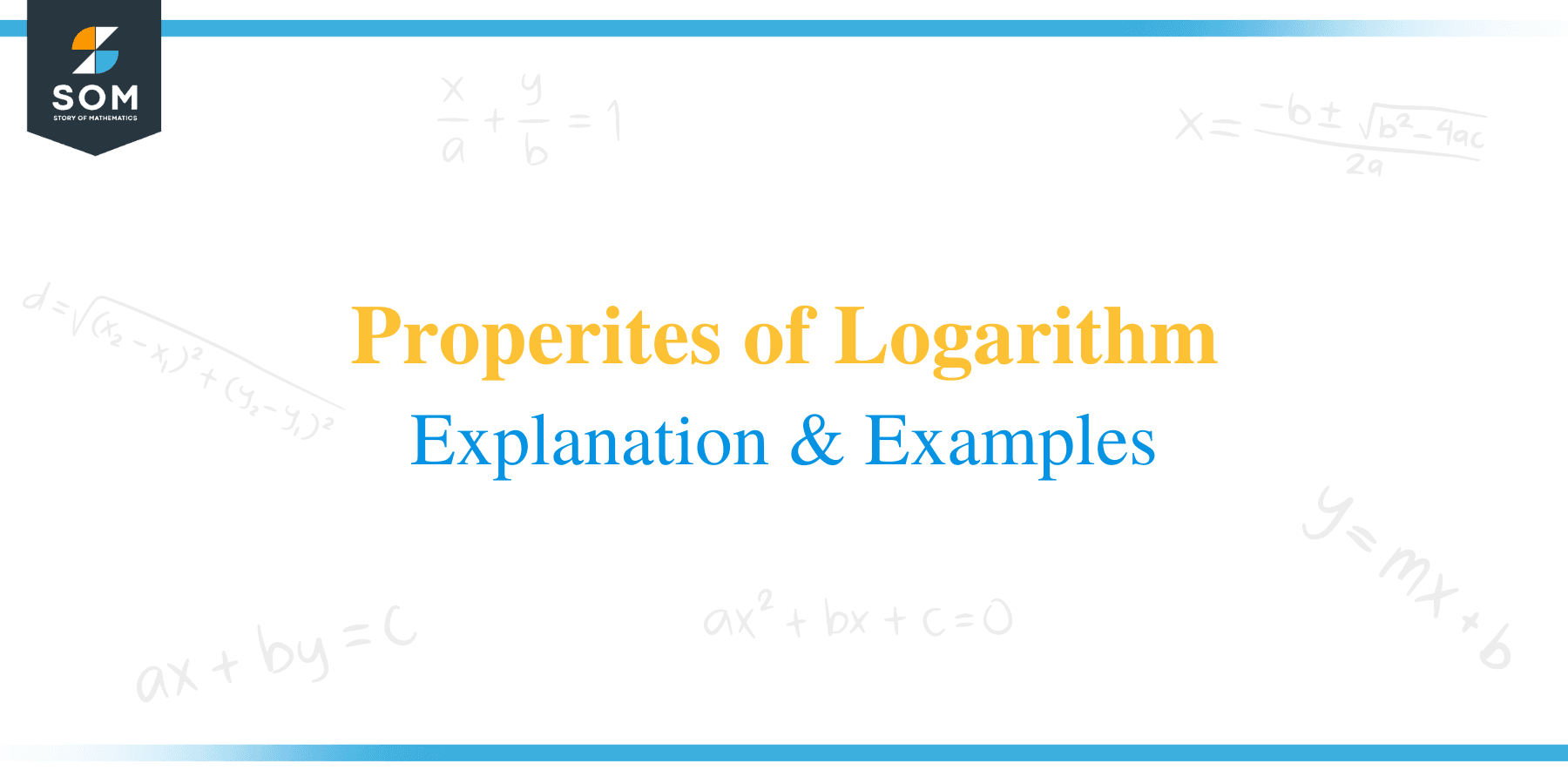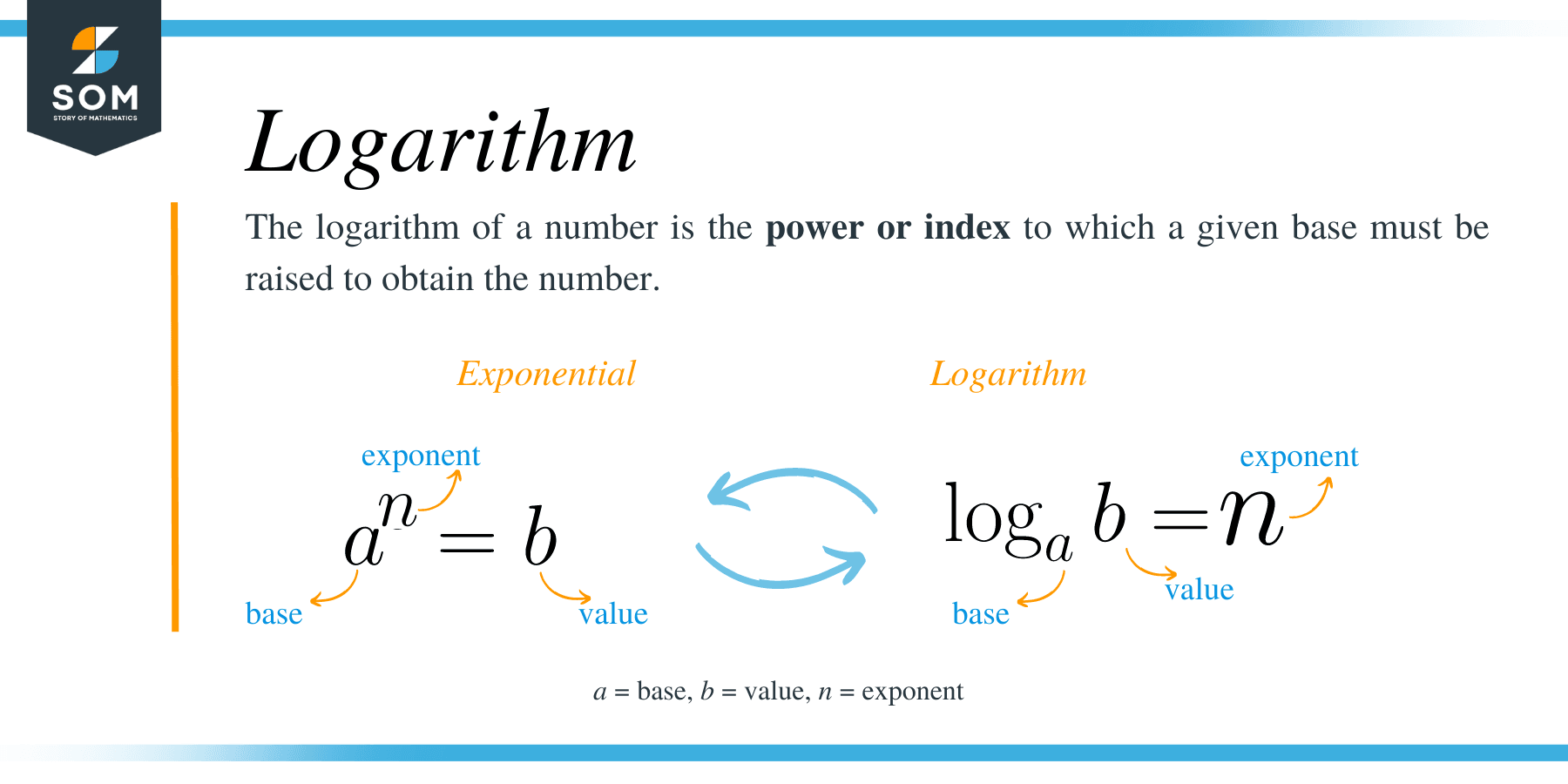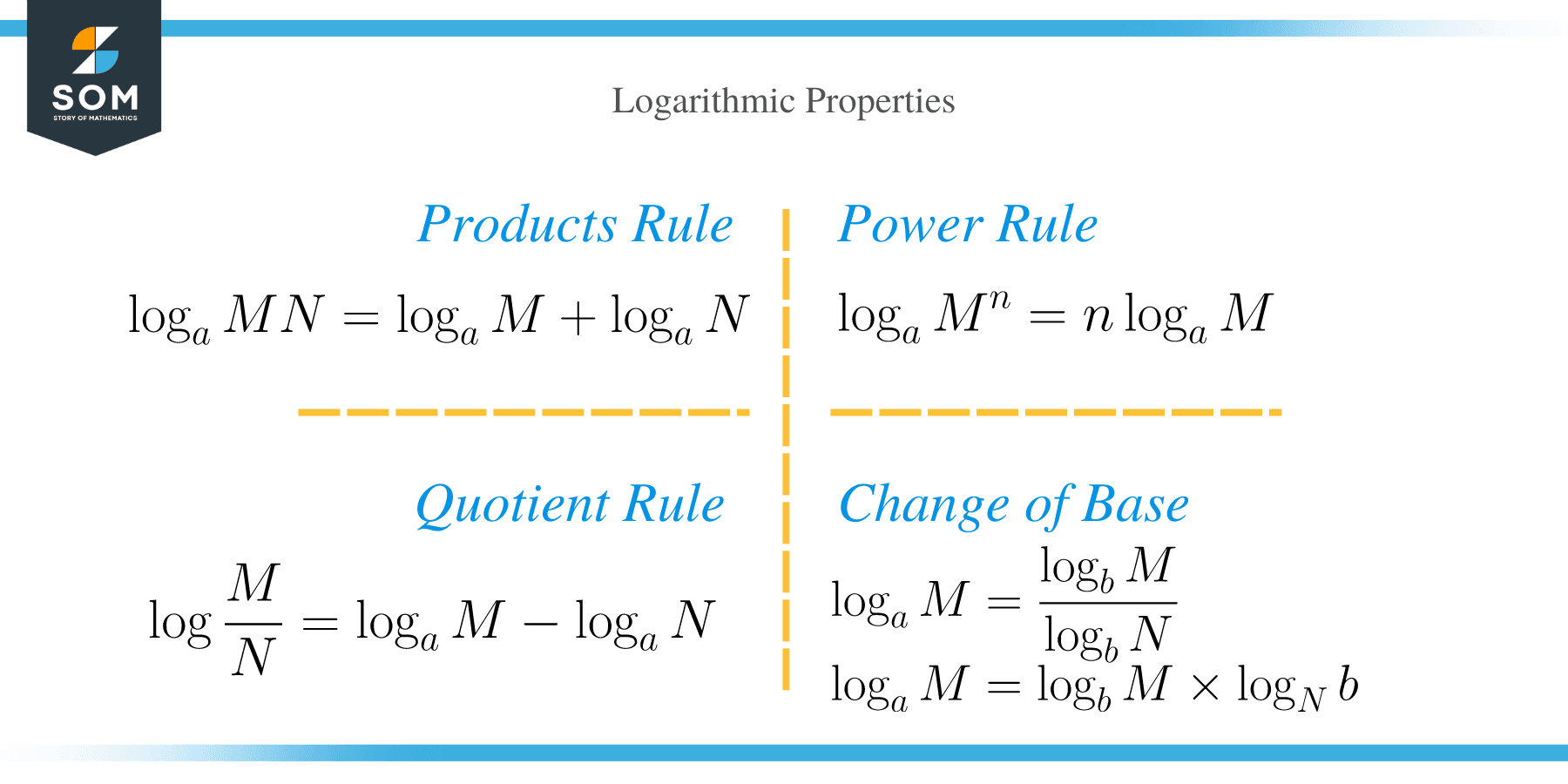- Home
- >
- Properties of Logarithm – Explanation & Examples
JUMP TO TOPIC
Properties of Logarithm – Explanation & Examples
 Before getting into the properties of logarithms, let’s briefly discuss the relationship between logarithms and exponents. The logarithm of a number is defined as t the power or index to which a given base must be raised to obtain the number.
Before getting into the properties of logarithms, let’s briefly discuss the relationship between logarithms and exponents. The logarithm of a number is defined as t the power or index to which a given base must be raised to obtain the number.
Given that, ax = M; where a and M is greater than zero and a ≠ 1, then, we can symbolically represent this in logarithmic form as;
log a M = x
Examples:
- 2-3= 1/8 ⇔ log 2 (1/8) = -3
- 10-2= 0.01 ⇔ log 1001 = -2
- 26= 64 ⇔ log 2 64 = 6
- 32= 9 ⇔ log 3 9 = 2
- 54= 625 ⇔ log 5 625 = 4
- 70= 1 ⇔ log 7 1 = 0
- 3– 4= 1/34 = 1/81 ⇔ log 3 1/81 = -4
- 10-2= 1/100 = 0.01 ⇔ log 1001 = -2
Logarithmic Properties
Logarithm properties and rules are useful because they allow us to expand, condense or solve logarithmic equations. It for these reasons.
In most cases, you are told to memorize the rules when solving logarithmic problems, but how are these rules derived.
In this article, we will look at the properties and rules of logarithms derived using the laws of exponents.

Product property of logarithms
The product rule states that the multiplication of two or more logarithms with common bases is equal to adding the individual logarithms i.e.
log a (MN) = log a M + log a N
Proof
- Let x = log aM and y = log a
- Convert each of these equations to the exponential form.
⇒ a x = M
⇒ a y = N
- Multiply the exponential terms (M & N):
ax * ay = MN
- Since the base is common, therefore, add the exponents:
a x + y = MN
- Taking log with base ‘a’ on both sides.
log a (a x + y) = log a (MN)
- Applying the power rule of a logarithm.
log a Mn ⇒ n log a M
(x + y) log a a = log a (MN)
(x + y) = log a (MN)
- Now, substitute the values of x and y in the equation we get above.
log a M + log a N = log a (MN)
Hence, proved
log a (MN) = log a M + log a N
Examples:
- log50 + log 2 = log100 = 2
- log 2 (4 x 8) = log 2 (22 x 23) =5
Quotient property of logarithms
This rule states that the ratio of two logarithms with the same bases is equal to the difference of the logarithms i.e.
log a (M/N) = log a M – log a N
Proof
- Let x = log aM and y = log a
- Convert each of these equation to the exponential form.
⇒ a x = M
⇒ a y = N
- Divide the exponential terms (M & N):
ax / ay = M/N
- Since the base is common, therefore, subtract the exponents:
a x – y = M/N
- Taking log with base ‘a’ on both sides.
log a (a x – y) = log a (M/N)
- Applying the power rule of logarithm on both sides.
log a Mn ⇒ n log a M
(x – y) log a a = log a (M/N)
(x – y) = log a (M/N)
- Now, substitute the values of x and y in the equation we get above.
log a M – log a N = log a (M/N)
Hence, proved
log a (M/N) = log a M – log a N
Power property of logarithms
According to the power property of logarithm, the log of a number ‘M’ with exponent ‘n’ is equal to the product of exponent with a log of a number (without exponent) i.e.
log a M n = n log a M
Proof
- Let,
x = log a M
- Rewrite as an exponential equation.
a x = M
- Take power ‘n’ on both sides of the equation.
(a x) n = M n
⇒ a xn = M n
- Take log on both sides of the equation with the base a.
log a a xn = log a M n
- log a a xn = log a M n ⇒ xn log a a = log a M n ⇒ xn = log a M n
- Now, substitute the values of x and y in the equation we get above and simplify.
We know,
x = log a M
So,
xn = log a M n ⇒ n log a M = log a M n
Hence, proved
log a M n = n log a M
Examples:
log1003 = 3 log100 = 3 x 2 = 6
Change of base property of logarithms
According to the change of base property of logarithm, we can rewrite a given logarithm as the ratio of two logarithms with any new base. It is given as:
log a M = log b M/ log b N
or
log a M = log b M × log N b
Its proof can be done using one to one property and power rule for logarithms.
Proof
- Express each logarithm in exponential form by letting;
Let,
x = log N M
- Convert it to exponential form,
M = N x
- Apply one to one property.
log b N x = log b M
- Applying the power rule.
x log b N = log b M
- Isolating x.
x = log b M / log b N
- Substituting the value of x.
log a M = log b M / log b N
or we can write it as,
log a M = log b M × log a b
Hence, proved.
Other properties of logarithms include:
- The logarithm of 1 to any finite non-zero base is zero.
Proof:
log a 1 = 0⟹ a 0=1
- The logarithm of any positive number to the same base is equal to 1.
Proof:
log a a=1 ⟹ a1= a
Example:
log 5 15 = log 15/log 5

